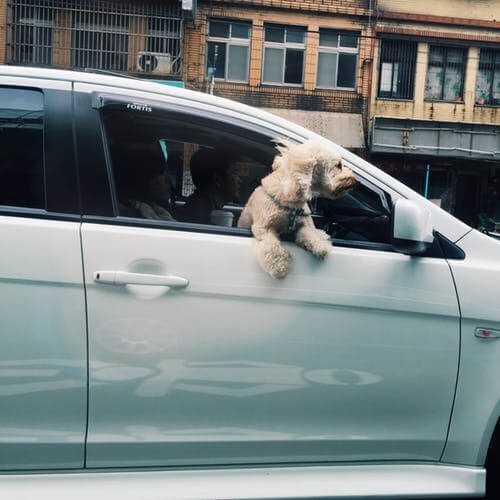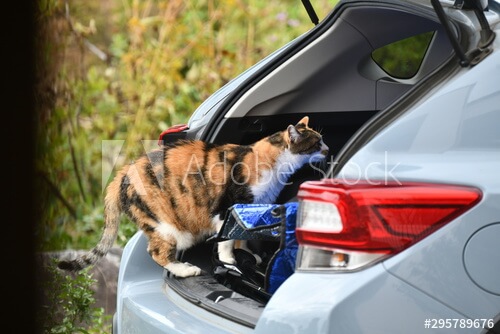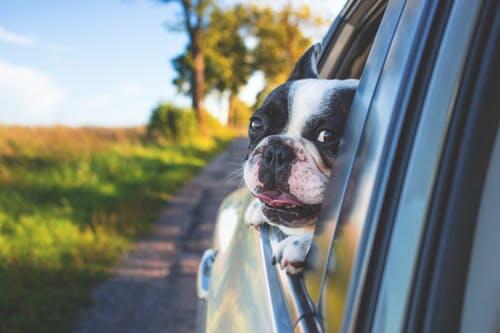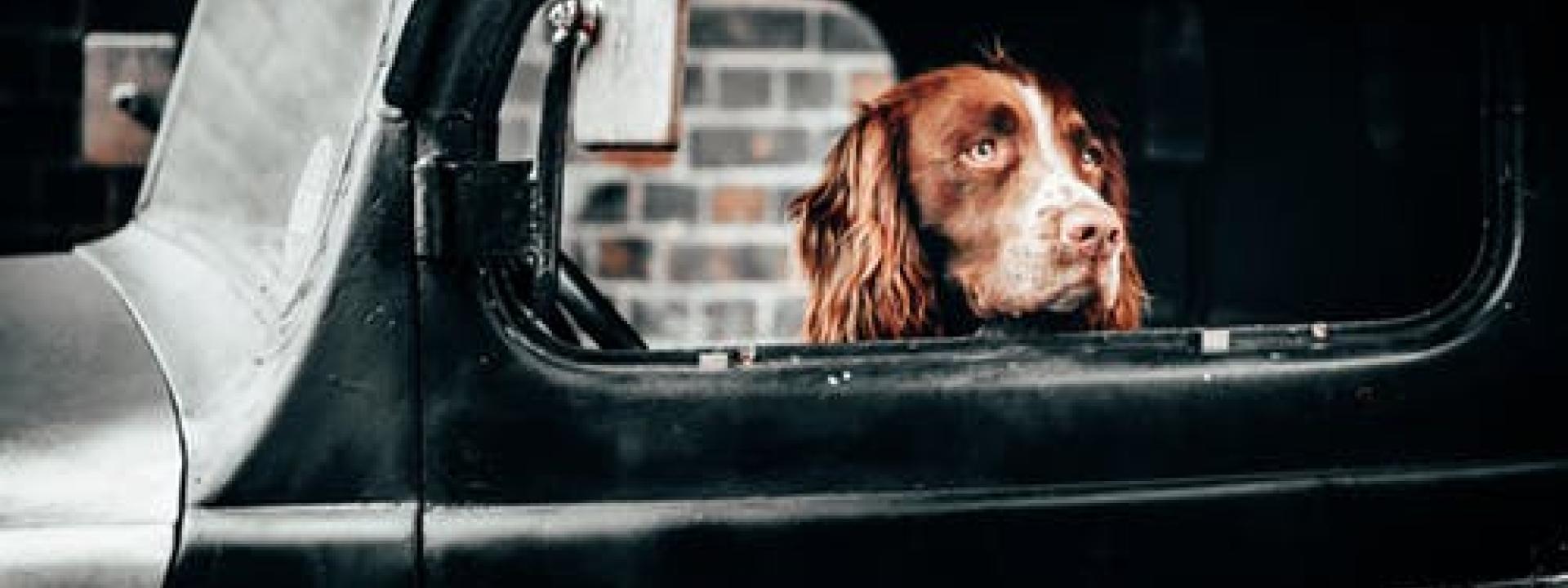Tips for taking your pet to the Vet!
Is your pet fearful of going to the veterinarian? Or fearful of leaving their home environment in general? While common, fearfulness can lead to many issues when needing to get your pet in a carrier or on a leash to exit your home. Whether it is a routine/emergency visit to your veterinarian, or a ride to the local pet store, it is vital your pet remain calm and cooperative. In this article, we will provide tips on how to ease your pets’ anxiety during these trying times.
We will first address our faithful canine friends. While some dogs live for going on a car ride, others flat out dread it. It is a loud and scary machine that transports them from the comfort of their home to the veterinarian’s office, pet store, park etc. Our first subject when discussing driving with your pet in the car is SAFETY! Nothing is more important than keeping your best friend safe while you’re getting them in and out of the vehicle and while driving. There are a lot of awesome inventions these days for transit safety, and one of our favorite products is pet seat belts / seat harnesses. “Pawaboo” is a company that manufactures dog seat belts that are highly rated for safety and comfort. Most options are easily installed into most seats and come with instructions. Always read through instructions thoroughly and if it does not look installed correctly, always call and ask for advice! There are options for all size pets.
While seat belts and harnesses are great options, some owners (or pets for that matter) may prefer a carrier instead. There are also great options for carriers with seat belt attachments. Most attach the seat belt to the carrier and lock in around it for stability. These options can create a better car ride for your dogs especially if you were to come to a sudden stop or have an accident. Keeping your dog in the back seat of your car is highly recommended.

Some dogs are so fearful of getting in the car that their owners find it almost impossible. One of the best defenses for this is to start early with exposing your dog to your vehicle. Take them to the park, to the pet store, or grandmas’ house! The idea is to get them used to riding in a car and not always expecting to go to the doctor as it can create a negative connotation. There are some cases in which you may adopt a dog later in life who unfortunately has not been acquainted with the car. It may be more difficult to get them used to car rides and may require more incentives. Treats never hurt! By rewarding them each time they cooperate and get into your vehicle, they will learn that leaving home can be a positive experience! Always provide a familiar blanket or toy in the car as the scent of their home may provide comfort as well. Creating a calm environment in your car is essential. There are many calming products that you can use if your dog needs help with keeping their cool! We will discuss these products later in this article. It is not recommended that you play loud music or raise your voice as this can scare your dog. Driving calmly is also important.
Once your dog is in the car finally calm and enjoying the ride (hopefully), comes the task of going to the dreaded… veterinarians office! Our best tip for acquainting your dog with the vets’ office is to stop by occasionally, just to say hello! Stopping in just for a pet and treat can make a difference in your dogs’ experience with us. Again, getting them out of the house to go other places is also extremely important. The goal is to get them comfortable with traveling, so it is not a stressful experience. This can mean a big difference when facing an emergency trip to the vets’ office. Getting them into the car quickly and safely will ensure your dog is treated as soon as possible.
There are some dogs who face extreme anxiety when travelling to the veterinarians or anywhere for that matter. They can exhibit quite erratic behavior that can be frightening even to you. There are great holistic options to try such as thunder shirts, calming collars and sprays, or calming chews. We always recommend trying these options before anything else. Vet Classic is a company that provides options for calming chews. Adaptil is a company that carries calming collars and sprays. If getting your dog to the vet is such a task that your dog is having issues with breathing, exhibiting aggressive behavior, or any other concerning behavior it could be time to speak with your veterinarian about medication that can help alleviate the stress travelling is causing your dog. Using prescription medication for transit is a last resort and is only to be considered when necessary. Trazodone is a mild sedative that is prescribed by your veterinarian that can alleviate your dogs’ stress.
Does your dog get in the car with no issues but ends up salivating or vomiting once the car is in motion? Some dogs experience car sickness especially in younger pups. Dramamine can be used to help alleviate these issues. Give us a call to discuss whether this is a good option for your pet and a dosage if so!

Our feline friends are far more complex when travelling versus dogs. Cats tend to be more homebodies since they generally don’t love leaving the comfort of their home. Our first tip on getting your cat into your car is to get them comfortable with their carrier! Leaving the carrier out around the house is one of the best ways to get them used to seeing it and not being fearful of the carrier. Putting toys, blankets or other familiar items can also help this process. Only bringing out the cat carrier when you are taking them out of the house can cause them to always react negatively (i.e. running, hiding, being aggressive/combative.) Leaving it out can sometimes create the opposite effect in which they use their carrier as a resting place/retreat. This can become a safe place for your cat!
Never put your cat in your car without putting them in a carrier first! It is extremely unsafe to do so as they can climb around your car getting stuck or causing you to have an accident. For stressed kitties who need a helping hand in calming down, there are some products that can help. Feliway spray or collars are great products to help relieve stress during travelling for your cat. You can use the collar on your cat or the spray in your car and in their carrier, which will release pheromones providing calming effects. The car should be a quiet place when your cat is in it, no loud music or noises. The carrier should be secured with a seat belt for additional stability or on a back-seat floor. Taking additional “fun” pet/treat visits to the vet is unfortunately not a great option for cats. Our recommendation is to take your cat to the vet at the minimum once a year. While this may not alleviate anxiety greatly, it at least gets them in the car and out of the house once per year. Bring treats and toys with your cat when leaving the house, it can always provide comfort!
Once you have arrived at your veterinarian’s office, most likely frazzled and ready to turn around and go back home, comes the task of acclimating your pet to the office. For some pets, just being outside of your home is stressful. To ease their nerves keep them on a leash or in a carrier as you arrive to the clinic and wait in the lobby to be seen. This can provide security especially when other pets may be in the lobby waiting as well. Always ask for assistance from a veterinary technician or receptionist if you are having trouble getting your pet out of your car. It is so important to remain calm when taking your pet into the veterinary office since they may already be stressed. We can set the standard by remaining calm no matter how stressed they may be, providing comfort in their time of need. Make sure to notify your veterinarians office that they may need to use caution when approaching your pet and treating them with special care due to their anxiety. This can be common and veterinary professionals understand that pets can be fearful of the doctor.

In closing, the best way to help our pets remain calm and have a safe trip to wherever they are going, is to cater to their needs and have patience! Sometimes it is as simple as offering up a tasty treat and belly rub, but if it is more complicated for your pet, we are here to help. Always feel free to give us a call or send an email with any questions or concerns when traveling with your pet, especially before administering any medications.

